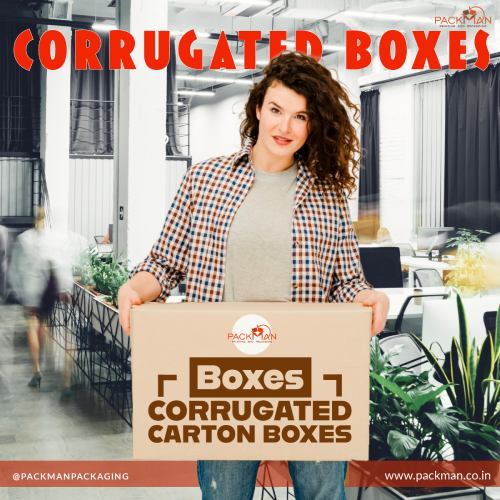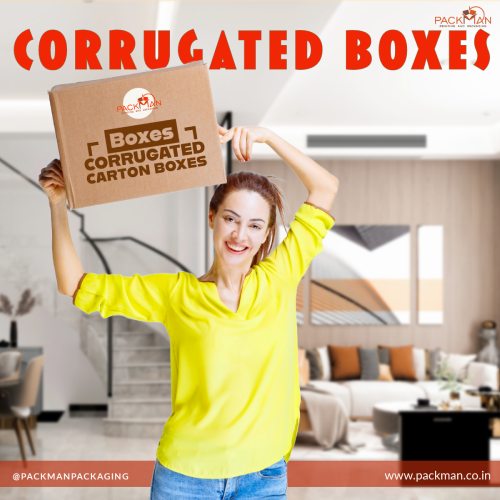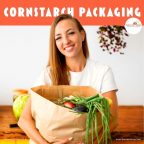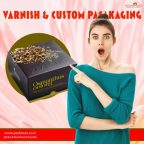Packaging today, is not just about protection, it is also about branding, information dissemination, and environmental responsibility. In a market filled with choices, the key is to choose the right packaging material that meets the product and brand requirements.
Packman Packaging India’s top manufacturer and supplier of corrugated carton boxes and cardboard boxes has tried to explain the difference between cardboard boxes and corrugated carton boxes in this article.
While both materials may look similar and share the common goal of safeguarding the contents within, yet they each possess unique characteristics that set them apart.
1. Terminology
While cardboard or folded carton boxes are made from heavy-duty paper stock or thick paper pulp, corrugated carton boxes are made up of two or more layers of cardboard paper glued together. It has three layers: an inside liner, an outside liner, and a fluted medium between the two.
2. What materials are used for making Cardboard boxes and Corrugated carton boxes
Cardboard Boxes:
The various grades of paperboard used for cardboard packaging are:
Solid bleached sulfate (SBS)
SBS paperboard, crafted from hardwood fibres, features a clay-coated top layer. Safe for food, it’s strong, foldable, tear-resistant, and suitable for medical products, bakery items, and milk packaging.
Solid Unbleached Sulfate (SUS) or coated natural Kraft (CNK)
SUS made from softwood pulp, is known for its smooth printable surface, durability, and strength.
Coated Recycled Board (CRB)
CRB, made from recycled fibres, is ideal for lightweight snacks, crackers, or cereal.
Corrugated Boxes
The commonly used materials used in making the outer and liners (or walls or boards) of a corrugated box are:
Kraft Liners made from 70% to 80% chemical pulp fibre from softwood trees (pine, fir, and spruce) are strong and offer smooth printable surfaces. They come in brown, white, bleached, mottled or speckled, and even birch-faced varieties.
Test liners are not as strong and costly as Kraft Liners and are used for inner liners.
3. Styles of Boxes
Cardboard box styles
Straight Tuck: Top and bottom flaps fold in for easy assembly, perfect for retail packaging.
Reverse Tuck: Enhanced closure security with rear-top and front-bottom flap tucking.
Lock Bottom: Stable and strong due to a locking bottom flap, ideal for heavier items.
Crash Bottom: Automatic closure, sturdy for heavy items, no manual locking needed.
One-Piece Top: Neat appearance, securely holds small items with a tucking top flap.
Two-Piece: Separate lid and base for elegant presentation, great for luxury goods.
Hanger Style: Reverse tuck with a hanger panel, maximizes retail display visibility.
Gable Top Style: Combines crash bottom and top handle, convenient for gifts or takeaways.
Pillow Style: Curved with side flap closures, ideal for jewelry, soaps, and small items.
Corrugated Box Styles
Regular slotted containers have equal-length flaps that meet when closed. They can be taped for security.
Full Overlap Slotted Container (FOL) has overlapping outer flaps, that provide stacking cushion and secure closure.
Half-slotted container lacks top flaps, popular for open storage use.
4. Benefits – Cardboard Boxes Vs Corrugated Carton Boxes
Cardboard Boxes:
- Lightweight and cost-effective
- Easily recyclable and eco-friendly
- Suitable for light to medium-weight items
- Versatile for various packaging needs like shoe boxes, milk cartons, etc.
Corrugated Carton Boxes:
- Offers enhanced durability and protection
- Ideal for heavy or fragile items like electronic goods, pizza boxes, retail displays, etc.
- Resistant to moisture and stacking pressures
- Provides better insulation and cushioning
Both options come with their own set of advantages, and selecting the right one depends on the specific requirements of your product and its journey from manufacturer to consumer.





